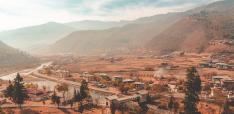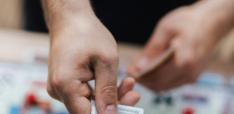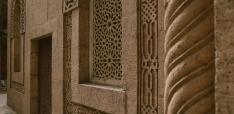5 Curve-Flattening Technologies being Developed by Young People

Young people around the world are developing new technologies to help in the fight against COVID-19. These innovations include low-cost ventilators, 3D-printed medical supplies and shipping containers repurposed as ICU wards.
COVID-19 has infected nearly 5 million people around the world, and continues to spread rapidly. Although lockdowns are now being eased in some countries, the impacts from this the virus will continue to be felt until a viable solution or vaccine is found. And while the world waits for such a solution, young people are adopting a do-it-ourselves attitude and using emerging technologies to strengthen local relief efforts, often in the some of the hardest-hit and most vulnerable places on the planet.
From 3D-printed face shields to an AI-powered app that can triage at-risk patients, here are just a few examples of the technology transformations the World Economic Forum’s Global Shapers and Young Global Leaders (YGL) have been developing to respond to the global pandemic:
1. Barcelona Hub and YGL Javier Garcia Martinez have produced a scalable artificial ventilator to ease pressure on hospitals amid acute shortages. Their device uses certified parts that are readily available in medical facilities and online stores, and meets all medical regulations in Spain. Three hospitals are already testing the device in their ICUs, giving patients suffering from the most severe symptoms a better chance of survival. The team behind the project, Open Ventilator, has produced eight prototypes and procured funding to develop 25 additional devices.
2. Madrid Hub is 3D printing face shields, respiratory filters and automatic respirators for some of the hardest-hit hospitals in the world. In order to amplify their work, they joined Coronavirus Makers, a community of more than 17,000 young scientists, engineers and designers using their skills to help end the shortage of life-saving equipment in Spain.
Similarly, Boston Hub is supporting the Gaza Hub in printing 3D equipment for frontline medical workers in a city under-equipped to respond to the pandemic, given the weakness of its health infrastructure after decades of conflict. Together, Global Shapers have printed 1,000 face shields, 50 goggles and 20 ventilator pieces to support local responses in Gaza, while providing impoverished families with access to basic necessities and regular meals.
“In places where health infrastructure is almost non-existent, young people can play a vital role in piloting new technologies that truly have the capacity to save millions of lives in this pandemic. And this is much needed in a context like ours,” said Shahd Alfarra of the Global Shapers Gaza Hub.
3. Young people are also behind innovative intensive care solutions. Emma Greer from the Milan Hub is behind a project called CURA (Connected Units for Respiratory Ailments), which repurposing shipping containers as ICU pods. The first container was deployed in Turin in April and there are plans to scale to hospitals across Italy, as well as in Europe and Latin America. The project is being manufactured by young volunteer designers, engineers and medical professionals.
Following a similar path, YGL Cameron Sinclair and his team at Jupe Health have launched a new venture to deploy medical shelters for use by three different groups: mentally and physically exhausted healthcare workers, as well as ICU patients who are either critically ill or whose symptoms are not life-threatening. The mobile spaces are produced at 1/30th the cost of standard hospital rooms, and can be shipped anywhere using existing logistics infrastructure.
4. Working with a team of Venezuelan doctors, YGL Andres Simon Gonzalez-Silen has developed Telesalud COVID-19, a free digital telemedicine solution. The platform provides virtual health services including remote consultations and monitoring between doctors and patients, with the aim of decongesting already fragile health systems weakened by the ongoing humanitarian crisis. Since its inception, Telesalud COVID-19 has supported over 80,000 Venezuelans abroad, completing more than 25,000 tests and referring 1,150 high-risk patients to local hospitals.
5. Zebra Medical Vision, led by YGL Eyal Gura, has created a scalable, AI-driven method for tracking the spread of COVID-19. This solution, coupled with a machine-learning algorithm, analyzes CT scans to detect the lung capacity of patients in order to better predict their recovery. When equipment is in dire supply, this technology supports patient triage, based on proven disease progression. This month, Gura will deploy his product at Apollo Hospitals, the largest healthcare provider in India, serving more than 40 million patients.
“Young people cannot wait for others to take action on COVID-19. This is our new normal and it is the perfect opportunity to take action with purpose today,” said Gonzalez-Silen.
Learn more, and continue to follow the response to COVID-19 from the Young Global Leaders and Global Shapers communities.
Sarah Shakour, Project Specialist, Forum Foundations, World Economic Forum. Natalie Pierce, Interactions and Programming Lead, Global Shapers Community, Foundations, World Economic Forum.
This first appeared on the Agenda blog. The views expressed in this article are those of the author alone and not the World Economic Forum.
Image: The Open Ventilator team at work in Barcelona


